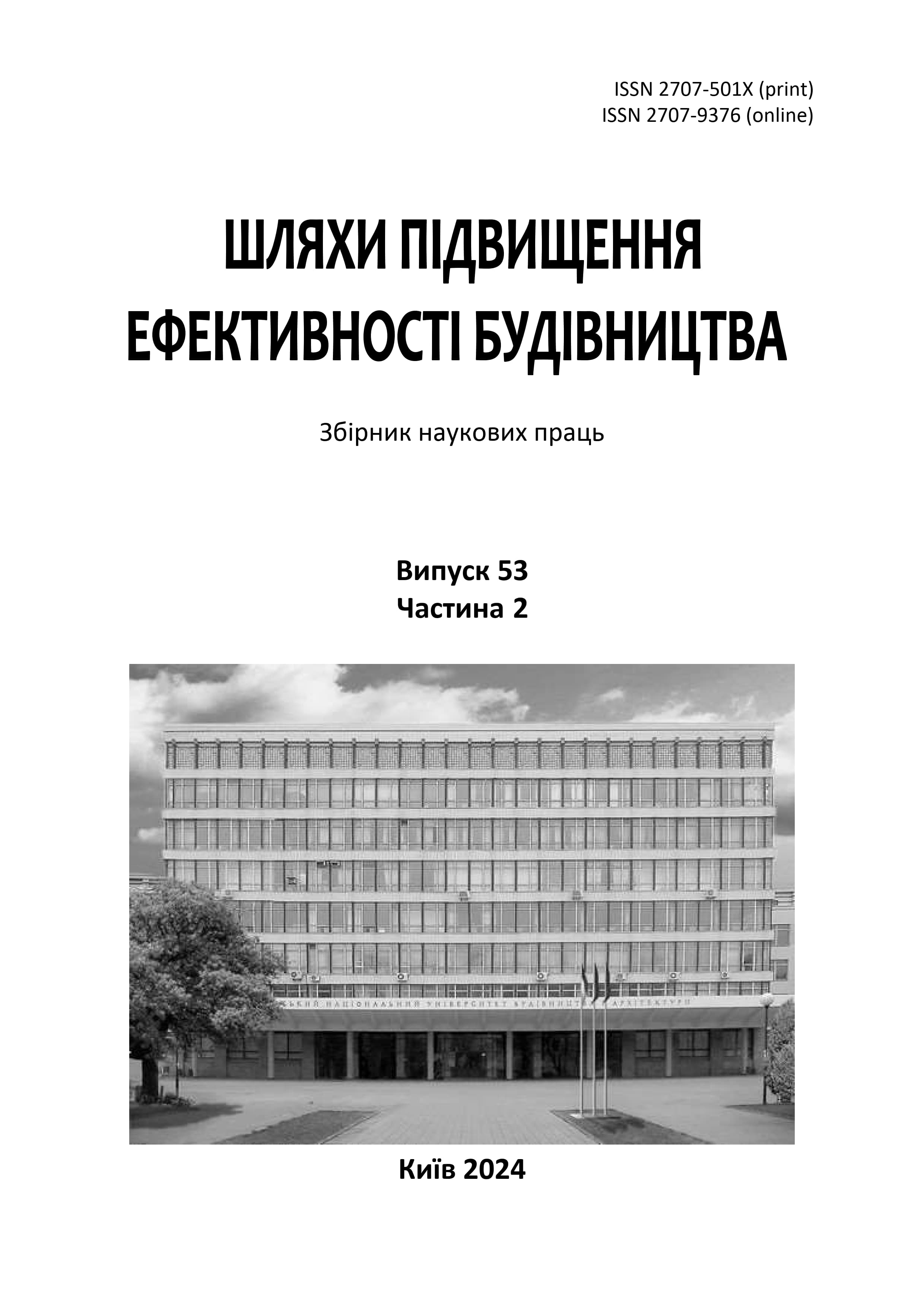Organizational and economic mechanism of forming the green buildings market
DOI:
https://doi.org/10.32347/2707-501x.2024.53(2).331-350Keywords:
environmental friendliness, green investments, renewable energy, market, institutions, energy sources, energy efficiency, sustainable development, region, energy systems, mechanismAbstract
The article presents the conceptual and methodological foundations for evaluating the effectiveness of housing regeneration projects in the context of contemporary urban and socio-economic transformations. The study focuses on the systematization and analysis of investment planning tools that enable evidence-based decision-making regarding the reconstruction of outdated housing stock, ensuring economic viability, technical efficiency, and social justification. The object of the research is the processes of residential stock reconstruction, while the subject is the set of investment design tools, including financial, analytical, techno-economic, spatial, and institutional approaches. The methodology integrates life cycle cost analysis (LCCA), financial modeling (NPV, IRR, DPP), energy modeling, SWOT analysis, GIS technologies, and value engineering. The paper proposes a comprehensive concept for the reconstruction of a deteriorated urban district, incorporating principles of inclusiveness, sustainability, and community engagement. A case study of BIM-based reconstruction of a five-story residential building demonstrates reduced construction time and material waste. A multi-criteria evaluation framework is presented, covering economic, environmental, social, and urban planning indicators. The findings can inform municipal regeneration programs, investment project assessments in development, and policymaking for post-war recovery. The study substantiates the need for a holistic approach that integrates economic feasibility, technical implementability, and social relevance in reconstruction projects. Key investment planning tools are identified to support balanced and sustainable housing modernization decisions.
References
Chan, A. P. C., Chau, K. W., & Cheung, Y. L. (2018). The value of green building design: An economic perspective. Journal of Cleaner Production, 178, 1178-1188.
Choi, S., Ahn, Y. H., Kim, J., & Son, M. (2020). Green building policy in South Korea. Buildings, 10(4), 69.
Deng, F., & Wu, X. (2014). An analysis of green building market growth in China. Sustainability, 6(11), 7605-7622.
Ding, G. K. (2014). The role of green building rating systems in the sustainable development of the building sector. Journal of Cleaner Production, 77, 1-13.
Giese, G., & Lee, L. J. (2019). The ESG factor in portfolio construction. Journal of Portfolio Management, 45(4), 85-98.
IRENA (International Renewable Energy Agency). (2019). Renewable Power Generation Costs in 2018. IRENA.
Jabareen, Y. (2013). Planning the resilient city: Concepts and strategies for coping with climate change and environmental risk. Cities, 31, 220-229.
Kats, G., Alevantis, L., Berman, A., Mills, E. and Perlman, J. (2003) The Costs and Financial Benefits of Green Buildings. A Report to California’s Sustainable Building Task Force.
Kim, J., Kim, K. J., & Song, J. (2013). An empirical study of the factors influencing green building adoption. Journal of Cleaner Production, 46, 200-207.
Lian, S., Jiang, Q., & Zhu, Y. (2020). Review of green building policies and relevant studies. Energy and Buildings, 223, 110190.
Mattoni, B., Sanna, U., & Lolli, F. (2018). Green building financial incentives: A review. Energy Policy, 118, 565-577.
OECD. (2015). Green Bonds: Increasing the Scale of Green Finance. OECD Publishing.
Osei-Kyei, R., & Chan, A. P. C. (2015). Review of critical success factors for public-private partnership (PPP) projects from a whole life cycle perspective. International Journal of Project Management, 33(7), 1361-1374.
Reed, R., Bilos, A., Wilkinson, S., & Schulte, U. (2009). The property profession and sustainability: an international perspective. Journal of Property Research, 26(1), 3-23.
Wang, X., Li, X., Wang, J., Yang, Z., & Chen, J. (2019). Research on the policy and mechanism of green building development in China. Energy and Buildings, 200, 110-120.
Yudelson, J. (2018). Green Building A to Z: Understanding the Language of Green Building. Island Press.
Zhang, X., Wang, Y., & Dong, Q. (2011). Barriers to and drivers for green building: The case of China. Renewable and Sustainable Energy Reviews, 15(7), 3502-3511.
Максимов А. Енергоефективність в муніципальному секторі. Навчальний посібник для посадових осіб місцевого самоврядування. Асоціація міст України. К.: «ВІ ЕН ЕЙ», 2015. 184 с.
Downloads
Published
How to Cite
Issue
Section
License

This work is licensed under a Creative Commons Attribution 4.0 International License.
Authors who publish with this journal agree to the following terms:
- Authors retain copyright and grant the journal right of first publication with the work simultaneously licensed under a Creative Commons Attribution License that allows others to share the work with an acknowledgement of the work's authorship and initial publication in this journal.
- Authors are able to enter into separate, additional contractual arrangements for the non-exclusive distribution of the journal's published version of the work (e.g., post it to an institutional repository or publish it in a book), with an acknowledgement of its initial publication in this journal.
- Authors are permitted and encouraged to post their work online (e.g., in institutional repositories or on their website) prior to and during the submission process, as it can lead to productive exchanges, as well as earlier and greater citation of published work (See The Effect of Open Access).

